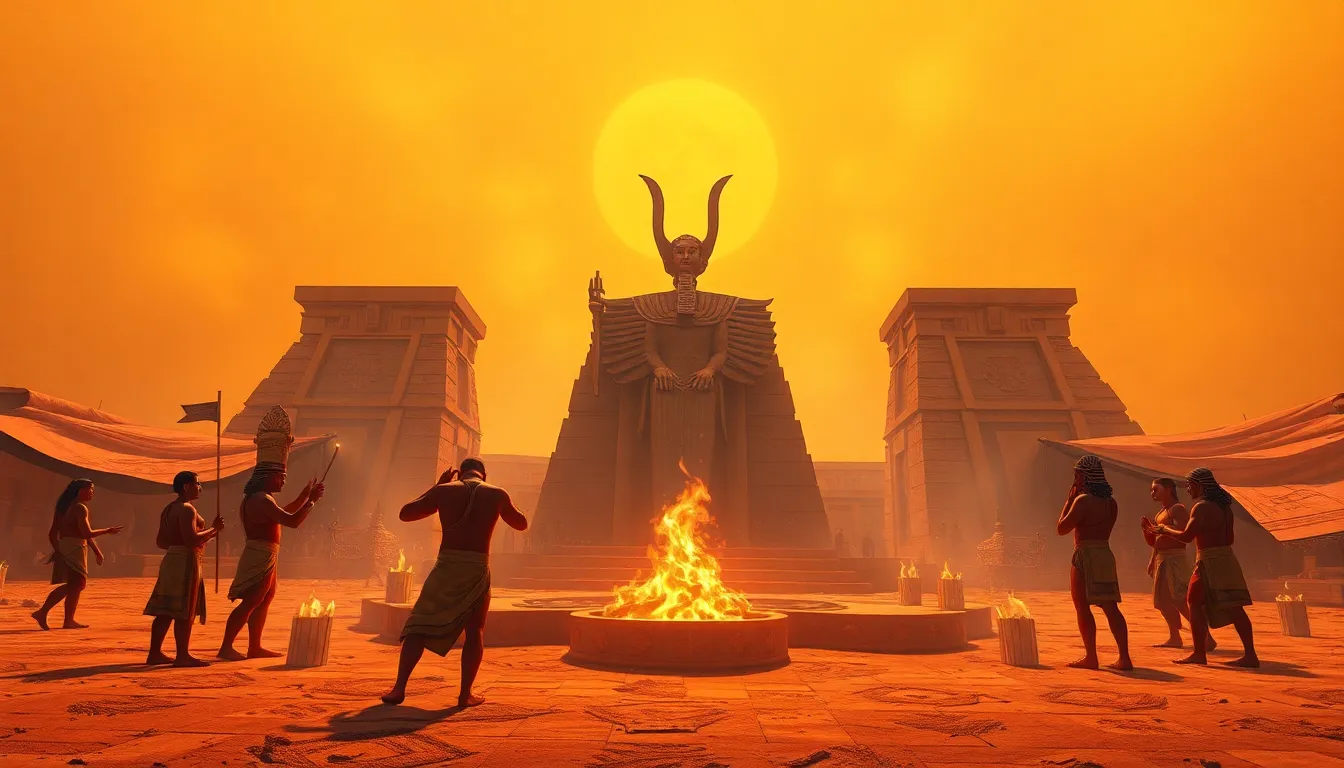The Rituals of the Festival of the Great Awakening
I. Introduction
The Festival of the Great Awakening is a vibrant and deeply spiritual celebration that holds significant meaning within various cultural contexts. This festival serves as a focal point for community gatherings, spiritual reflection, and the rekindling of ancient practices. Rituals play a crucial role in enhancing the spiritual experience, fostering community ties, and preserving cultural heritage.
This article aims to explore the various rituals associated with the Festival of the Great Awakening, highlighting their importance and the ways in which they resonate with participants and communities alike.
II. Historical Background
The origins of the Festival of the Great Awakening are rooted in ancient traditions that emphasize renewal and spiritual enlightenment. This festival has evolved over centuries, adapting to the changing beliefs and practices of the communities that celebrate it.
Key figures throughout history have shaped the festival, including spiritual leaders and cultural icons who have contributed to its rituals and significance. Significant events, such as historical awakenings and cultural renaissance periods, have also influenced the festival’s evolution.
- Ancient Beginnings: The festival’s earliest manifestations can be traced back to rituals aimed at honoring the gods and seeking divine guidance.
- Cultural Influences: Over time, the festival has absorbed elements from various cultures, enriching its practices and broadening its appeal.
- Modern Adaptations: Today, the festival incorporates contemporary spirituality while honoring its ancestral roots.
III. Preparatory Rituals
Preparatory rituals are essential for setting the stage for the festival. They involve community gathering and meticulous planning to ensure that the event is meaningful and well-organized.
- Community Gathering: Members of the community come together in the weeks leading up to the festival to discuss and plan the various activities and rituals.
- Spiritual Cleansing Practices: Participants often engage in practices such as bathing in sacred waters, fasting, or meditating to cleanse their spirits and prepare for the festival.
- Symbolic Preparations: Decorations and offerings are created, often using natural materials like flowers, fruits, and incense, to honor the spirits and invite blessings.
IV. Opening Ceremonies
The opening ceremonies are a crucial component of the Festival of the Great Awakening, marking the official start of the festivities and inviting the community to participate fully.
- Significance: These rituals are intended to invoke blessings and set a sacred atmosphere for the festival.
- Traditional Music and Dance: Performances often include traditional songs and dances that tell stories of spiritual journeys and cultural heritage.
- Invocations and Blessings: Spiritual leaders, elders, or shamans may lead invocations, calling upon ancestors and deities to bless the gathering.
V. Daily Rituals During the Festival
Each day of the festival is filled with various rituals that promote spiritual awakening and community bonding. These daily practices help participants engage with the festival’s themes on a deeper level.
- Morning Meditations: Each day often begins with group meditations, allowing participants to reflect on their intentions and connect with their inner selves.
- Workshops and Teachings: Various workshops focus on topics such as mindfulness, spiritual awakening, and cultural practices, providing participants with tools for personal growth.
- Group Rituals: Community rituals, such as circle gatherings or collaborative art projects, foster connections among participants and strengthen community bonds.
VI. Evening Celebrations
The evenings of the festival bring a sense of magic and reflection, as participants gather to celebrate and honor their spiritual journeys.
- Fire Ceremonies: Central to the evening celebrations, fire ceremonies symbolize transformation and purification. Participants often write down burdens or fears and throw them into the fire as a form of release.
- Storytelling: Participants share personal experiences, stories of awakening, and ancestral tales, creating a rich tapestry of shared wisdom and connection.
- Nightly Rituals: Rituals honoring ancestors and spiritual guides may include offerings, chants, and moments of silence to recognize those who have passed.
VII. Closing Rituals
The closing rituals of the festival are an important time for reflection and gratitude, allowing participants to acknowledge their experiences and the journey they have undertaken during the festival.
- Significance: These rituals serve as a way to conclude the festival respectfully and honorably, marking the transition back to daily life.
- Farewell Rituals: Participants may engage in farewell practices, expressing gratitude to the community, the spirits, and themselves for the shared experience.
- Reflections: Many participants take time to reflect on their personal growth and the impact of the festival on their spiritual journey.
VIII. Conclusion
The Festival of the Great Awakening is a profound celebration that showcases the importance of rituals in fostering community and spirituality. Through a series of well-orchestrated events—from preparatory rituals to closing ceremonies—participants engage in a transformative experience that transcends the individual and strengthens communal ties.
As the festival continues to evolve, its lasting influence on participants and communities remains evident. It serves as a reminder of the power of collective spirituality and the importance of honoring one’s cultural heritage.
We invite readers to explore similar festivals in their own cultures or participate in the Festival of the Great Awakening to experience the richness of these rituals firsthand.




